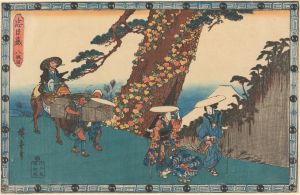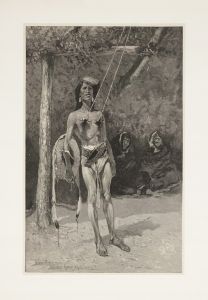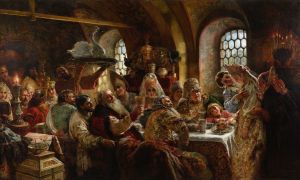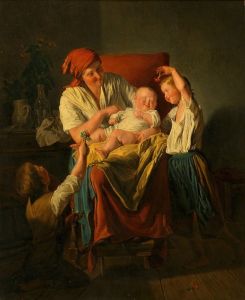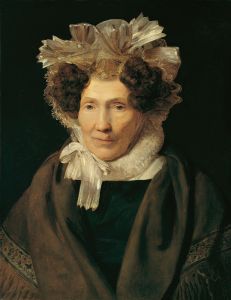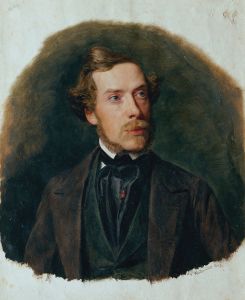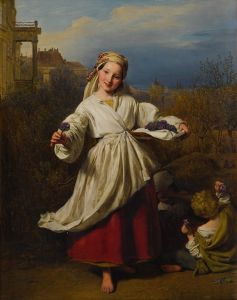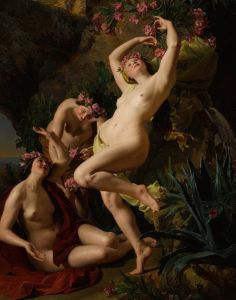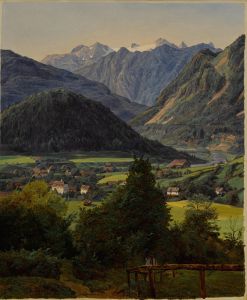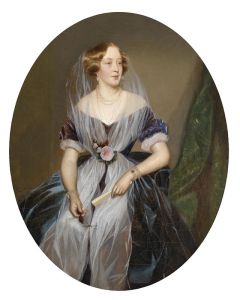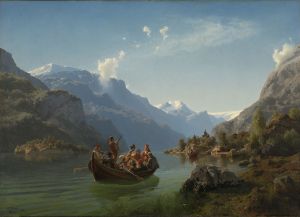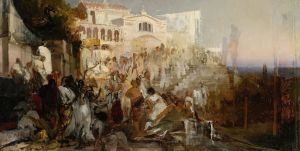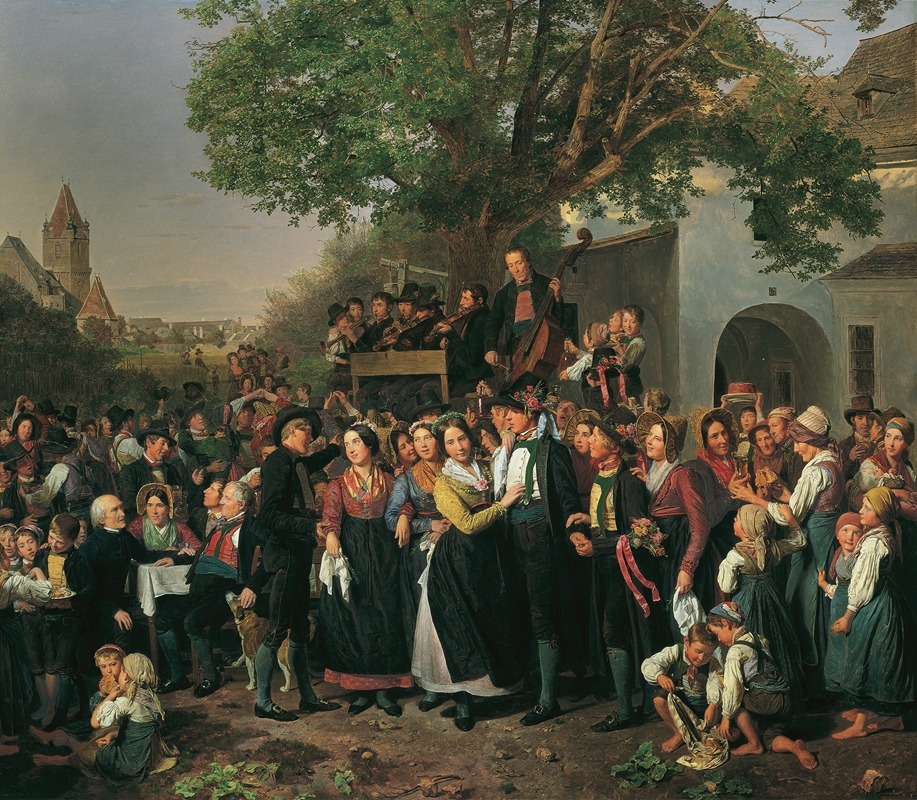
Niederösterreichische Bauernhochzeit
A hand-painted replica of Ferdinand Georg Waldmüller’s masterpiece Niederösterreichische Bauernhochzeit, meticulously crafted by professional artists to capture the true essence of the original. Each piece is created with museum-quality canvas and rare mineral pigments, carefully painted by experienced artists with delicate brushstrokes and rich, layered colors to perfectly recreate the texture of the original artwork. Unlike machine-printed reproductions, this hand-painted version brings the painting to life, infused with the artist’s emotions and skill in every stroke. Whether for personal collection or home decoration, it instantly elevates the artistic atmosphere of any space.
Ferdinand Georg Waldmüller, an Austrian painter, created the painting "Niederösterreichische Bauernhochzeit" (Lower Austrian Peasant Wedding) in 1843. Waldmüller, born in Vienna in 1793, is renowned for his detailed and realistic depictions of everyday life, landscapes, and portraits. He is considered one of the most important Austrian painters of the Biedermeier period, which spanned from 1815 to 1848.
"Niederösterreichische Bauernhochzeit" is a quintessential example of Waldmüller's ability to capture the essence of rural life with meticulous attention to detail and vibrant color. The painting depicts a traditional peasant wedding in Lower Austria, showcasing the customs and celebrations typical of the region during the 19th century. The scene is lively and filled with various figures, each engaged in different activities that contribute to the overall festive atmosphere.
In the painting, the bride and groom are the central figures, surrounded by their family and friends. The bride is dressed in a traditional white gown, while the groom wears a dark suit, both adorned with floral decorations. The couple is often depicted in a moment of joy and celebration, reflecting the happiness of their union. Around them, guests are seen dancing, eating, drinking, and engaging in conversations, highlighting the communal nature of such events.
Waldmüller's use of light and shadow in "Niederösterreichische Bauernhochzeit" is particularly noteworthy. He skillfully employs natural light to enhance the realism of the scene, creating a sense of depth and dimension. The bright, sunlit areas contrast with the shaded regions, drawing the viewer's eye to the central action while also providing a sense of the time of day and the outdoor setting.
The painting also serves as a valuable historical document, offering insights into the clothing, architecture, and social customs of rural Austria in the mid-19th century. The detailed depiction of traditional costumes, with their intricate patterns and vibrant colors, provides a glimpse into the fashion of the time. The architecture of the buildings in the background, with their thatched roofs and rustic construction, further situates the scene in a specific cultural and geographical context.
Waldmüller's attention to detail extends to the portrayal of individual characters, each with distinct expressions and postures that convey their emotions and roles within the celebration. This level of detail not only enhances the realism of the painting but also invites viewers to engage with the narrative, imagining the stories and relationships between the figures.
"Niederösterreichische Bauernhochzeit" exemplifies Waldmüller's mastery in capturing the beauty and complexity of everyday life. His ability to combine technical precision with a deep understanding of his subjects results in a work that is both aesthetically pleasing and rich in cultural significance. The painting remains an important piece in the study of 19th-century Austrian art and continues to be appreciated for its historical and artistic value.





